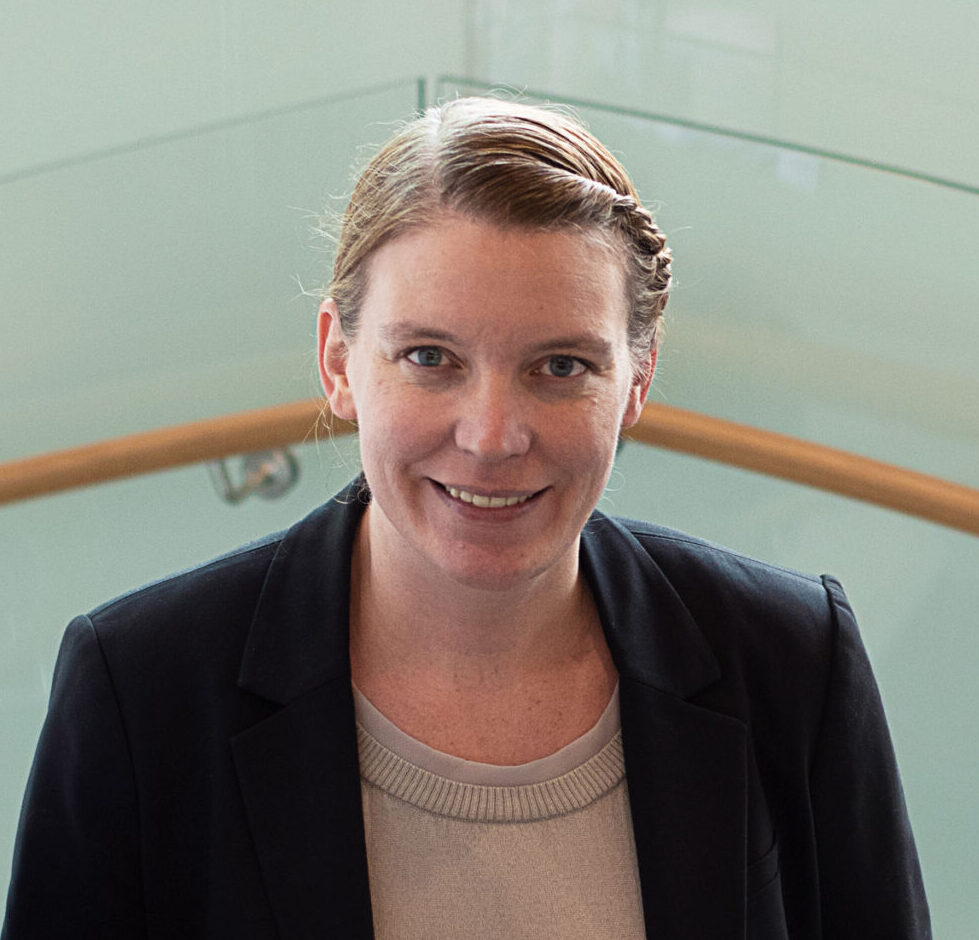OICR is proud to welcome Dr. Tricia Cottrell to Ontario’s cancer research community.
Dr. Tricia Cottrell, who is an immunologist and pathologist by training, is focused on the interplay between cancer cells and the immune system. She maps these complex interactions, as patients undergo treatment, to develop new biomarkers that can better predict the course of a patient’s disease.
Joining OICR from Johns Hopkins University in Baltimore, MD, Cottrell brings unique expertise in studying the tumour immune microenvironment, specifically in lung cancer. Here, she discusses her transition and her new appointments at the Canadian Cancer Trials Group, Queen’s University and OICR.
How did you become interested in the field of immuno-oncology?
The idea of harnessing the immune system to control and eliminate cancer fascinates me.
My PhD research on the autoimmune disease scleroderma left me eager to find ways to study immune responses in human tissue. While pursuing this research through my anatomic pathology residency, I stumbled upon the revolution happening in cancer immunotherapy. There are a lot of interesting intersections between cancer immunology and autoimmunity, and I knew I wanted to dig in.
What problems and questions are you working to solve?
Generally, I look at different features of the immune response to cancer and find patterns in these features that are associated with a response to therapy. I’m addressing the question: can we predict which patients are most likely to respond to treatment?
When we have tools to answer that question, we can help patients decide which treatment is best suited for their unique disease.
How are you addressing those big questions?
As a pathologist, I start with simple observations made through a microscope. Then, I use techniques like multiplex immunofluorescence to understand the cells and molecules driving the patterns I see in the tissue. Finally, I integrate these observations with other –omics analyses of the same sample, like DNA or RNA profiling, in pursuit of better biomarkers. The ultimate goal is to have biomarkers that can accurately predict which therapy or combination of therapies is most likely to empower a patient’s immune system to eliminate their cancer.
Through these studies, we also identify patterns and molecular characteristics in the tumours of patients who respond poorly to treatment. We can use this knowledge to find mechanisms of resistance, or the ways that the cancer can evade treatment. Then we can develop new therapies to address these mechanisms.
You’ve been recognized and awarded for your research on several occasions. What is an achievement that most people don’t know about?
I never anticipated that my research as a pathologist would lead me to analyzing big data. I’m quite proud that I learned some computer programming and I continue to integrate new technologies and cutting-edge analytic approaches into my research.
A specific achievement I am proud of is developing a method to measure the response of lung cancer patients to checkpoint blockade therapy using microscopic features of their tumours. This method is now being validated in a large clinical trial and has been shown to work in other cancer types as well. We are currently investigating its potential as a pan-tumour biomarker that would allow unprecedented standardization of clinical trials across different cancer types.
Why did you choose to relocate to Kingston?
I was looking for an opportunity to expand my research focusing on patients enrolled in clinical trials. Kingston offered that opportunity through an appointment with the Canadian Cancer Trials Group (CCTG), which is based at Queen’s University where I am also an Assistant Professor.
At CCTG, I get to participate in the design of clinical trials, including arranging tissue collection and planning the correlative science (the study of the relationship between biology and clinical outcomes) that goes along with those trials. My goal is to make sure my research will be translatable to the clinic, or in other words – to find solutions that can be applied in practice.
I’m also personally very excited about the opportunity for my family to be here in Canada.
What are you looking forward to over the next year?
I look forward to maintaining my existing collaborations while broadening my research scope. I’ll be working to establish a laboratory-based platform that produces high-quality, large-scale multiplex immunofluorescence data from tumour tissue specimens. I also look forward to laying the groundwork for a data integration and analysis pipeline for tissue-based immunology studies.
Most of all, I’m excited to begin growing my own lab group. I hope to foster a collaborative team environment with individuals from diverse backgrounds in pathology, biology, immunology, bioinformatics and more.

